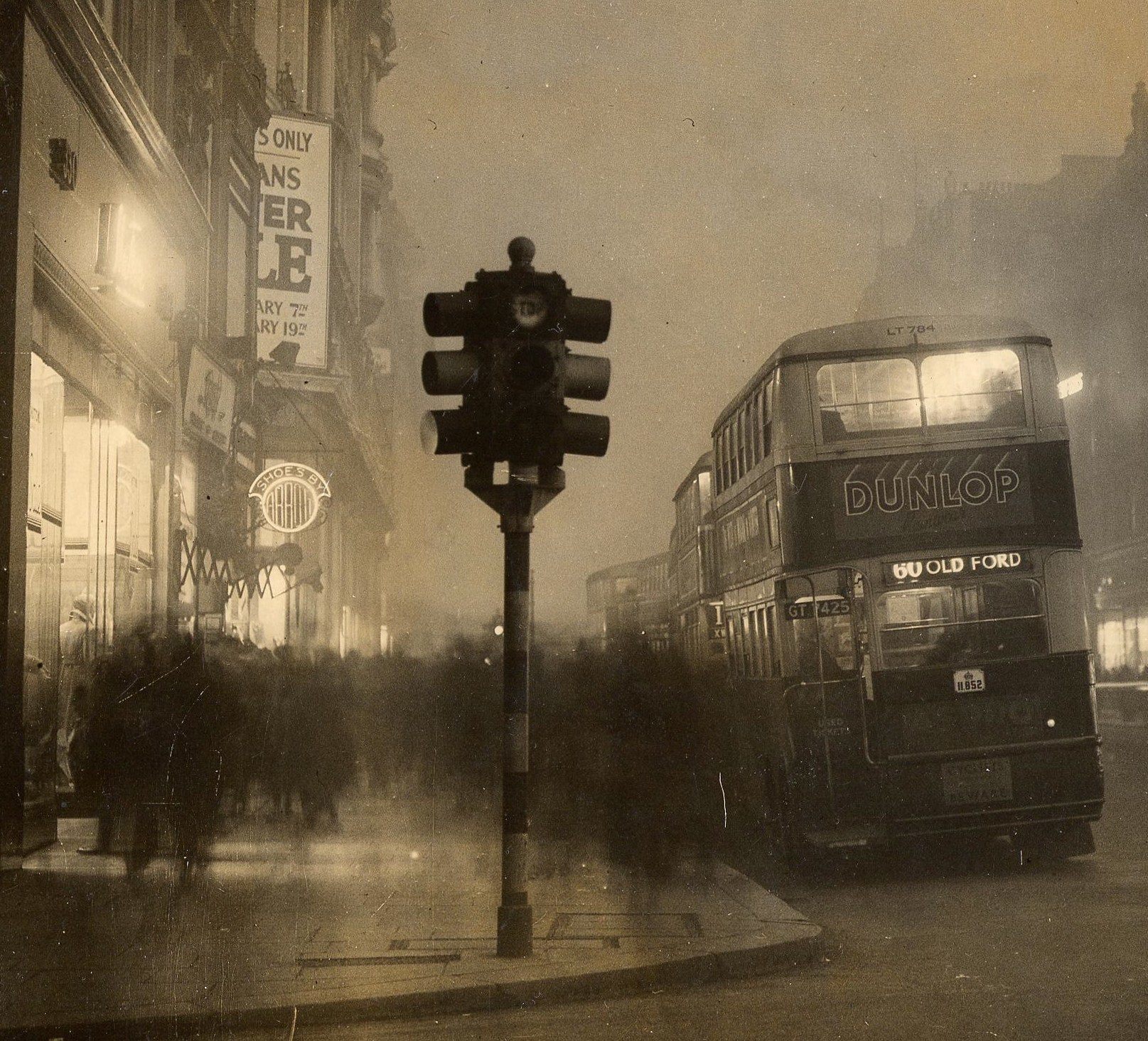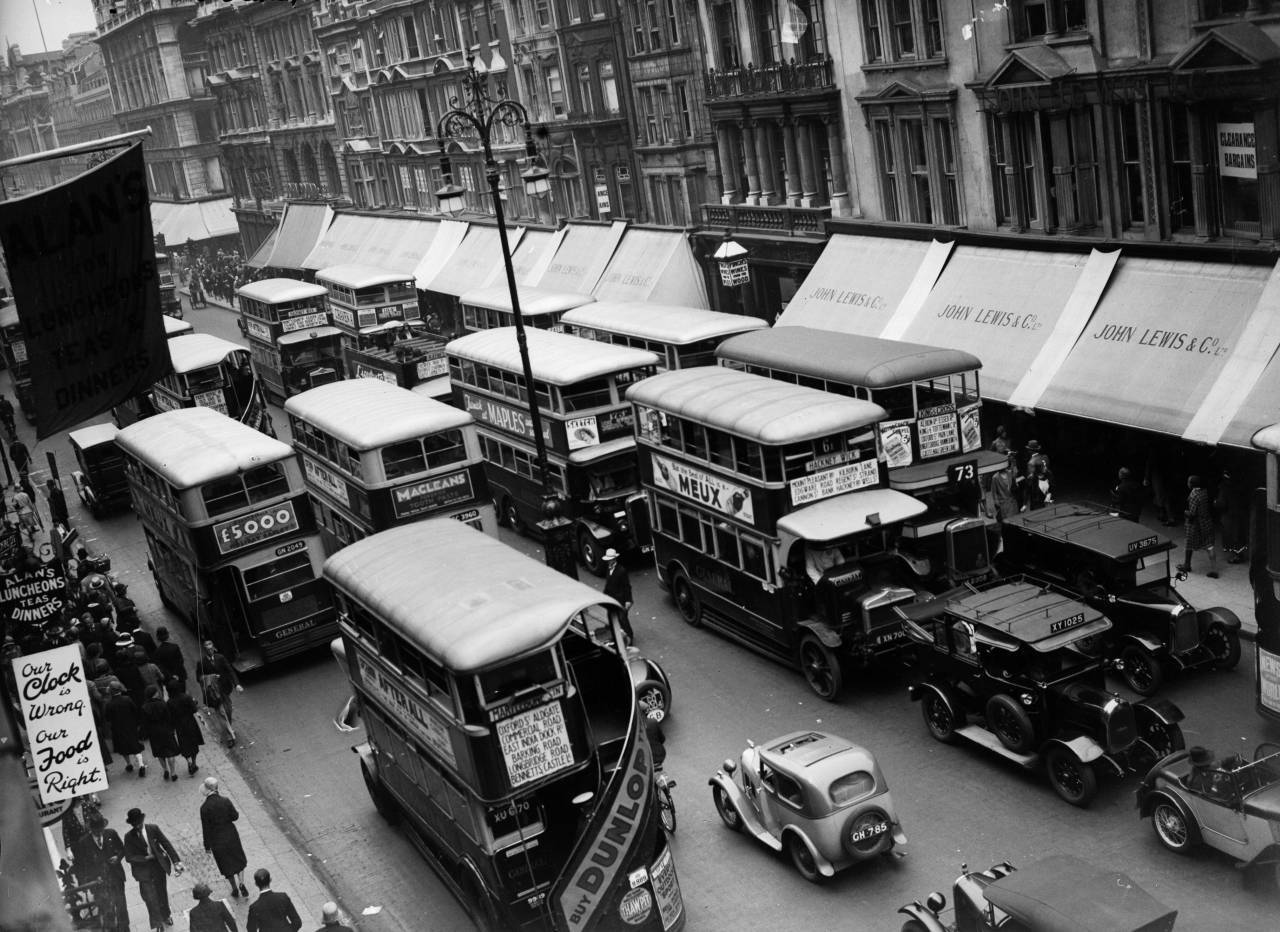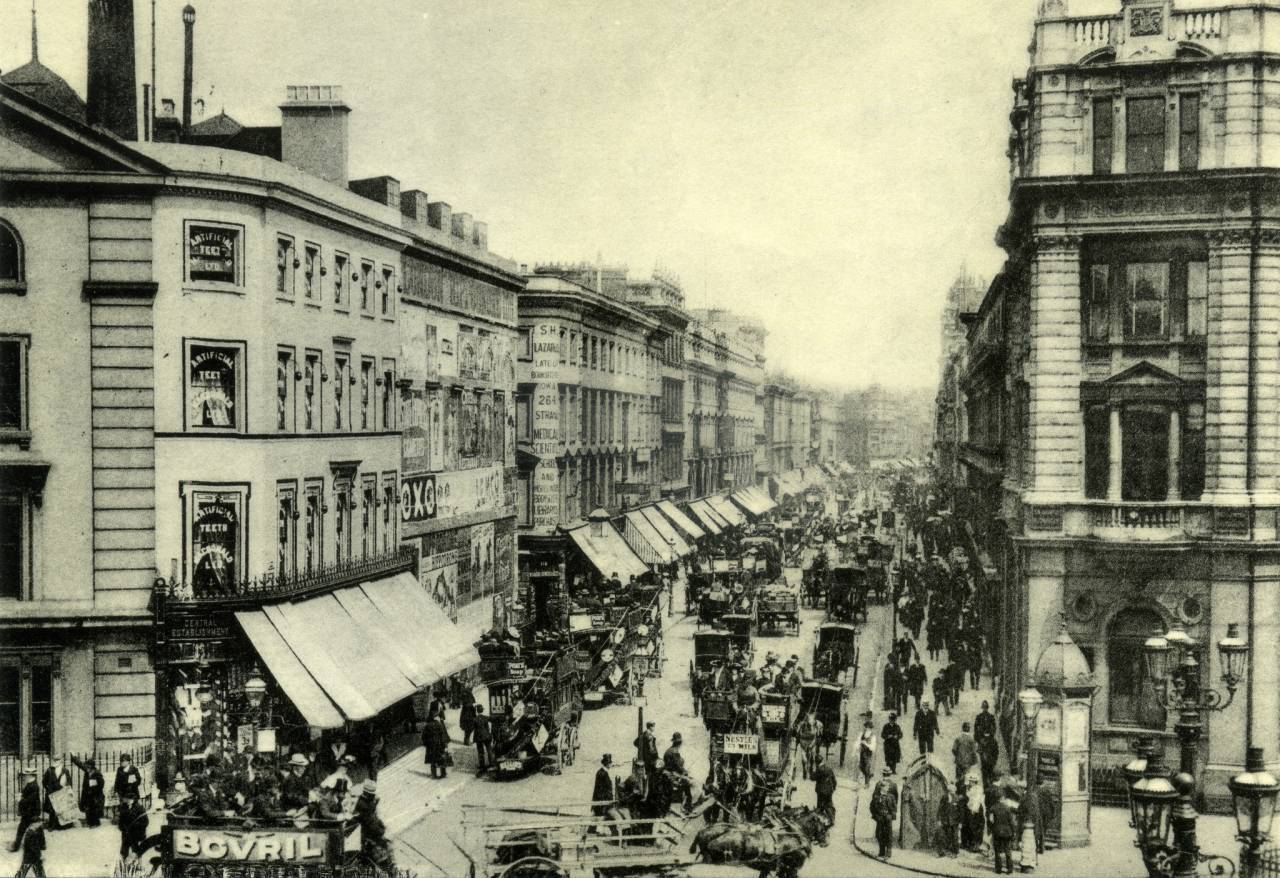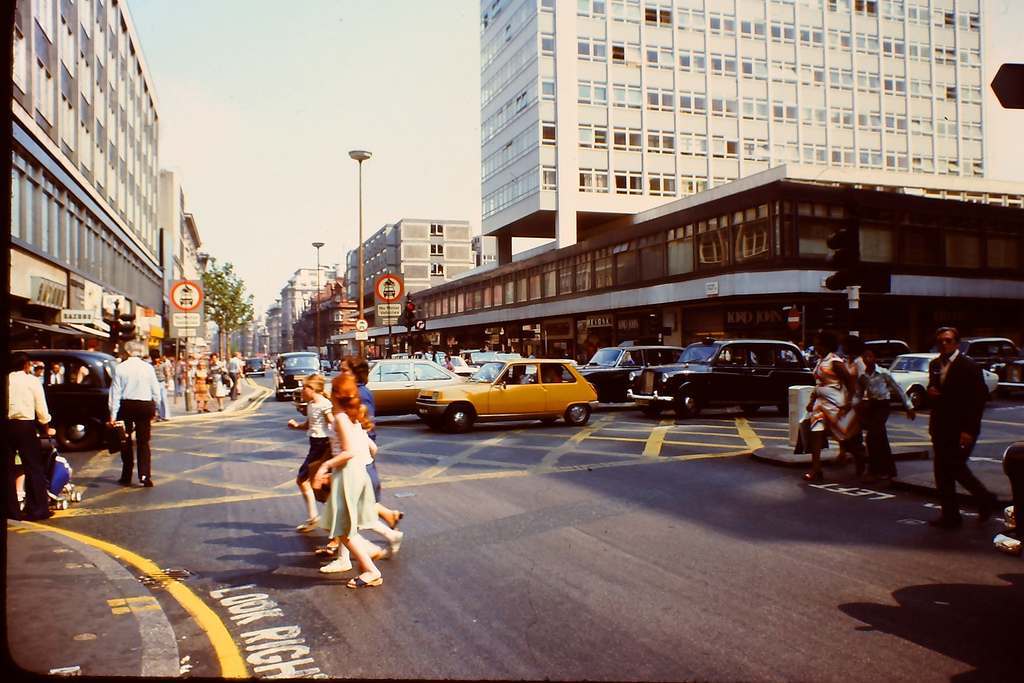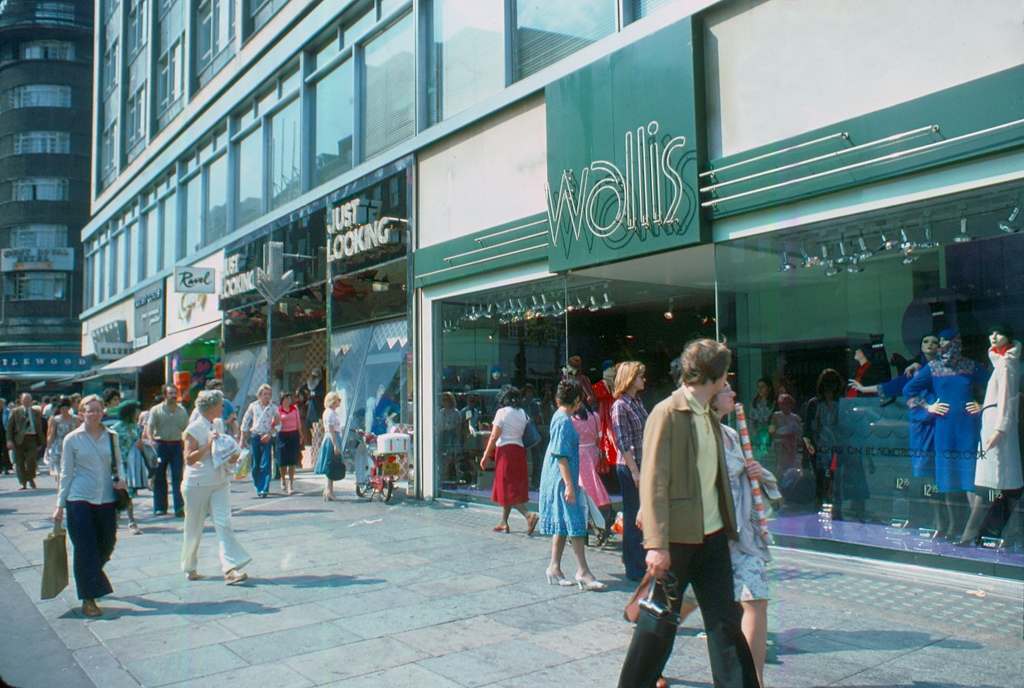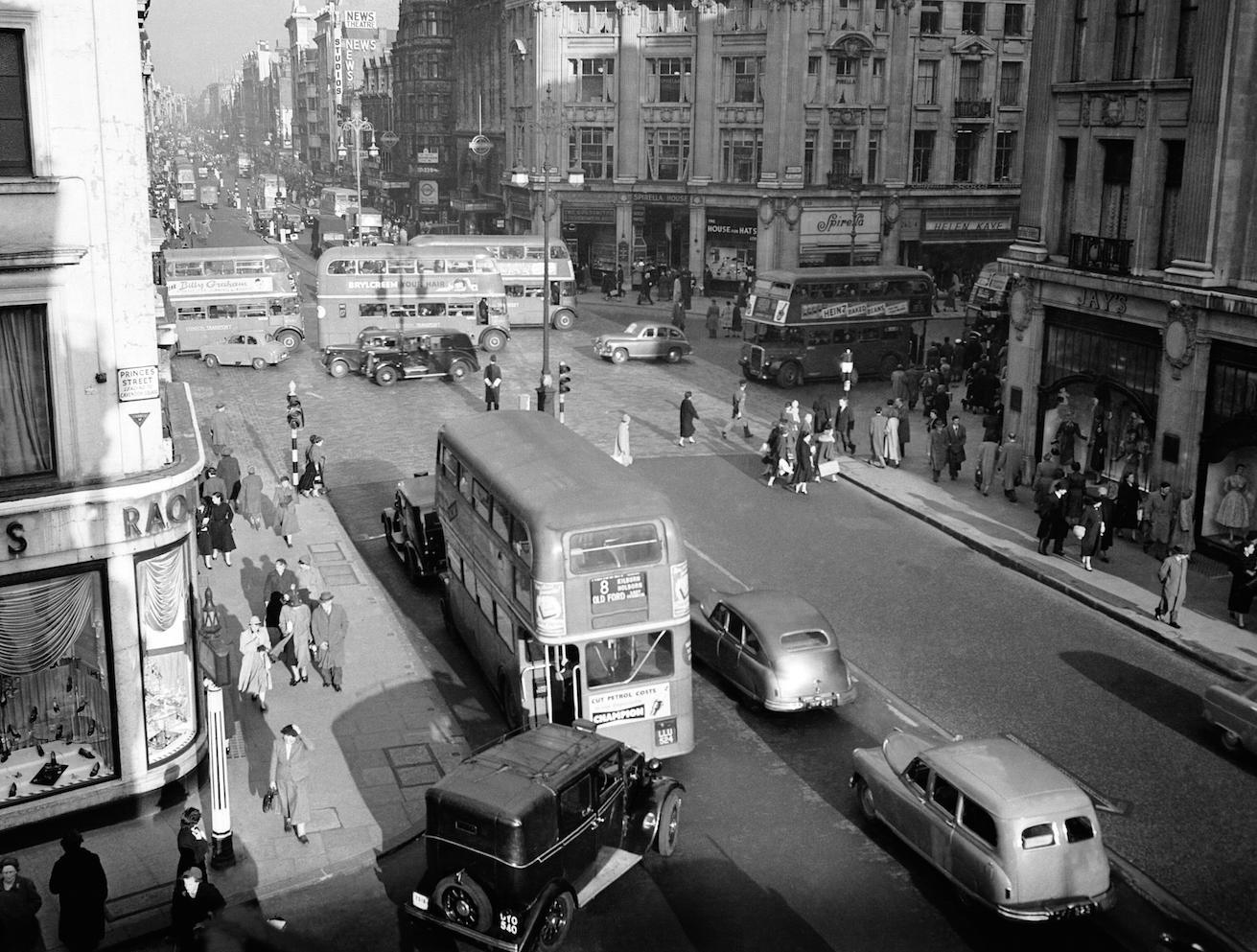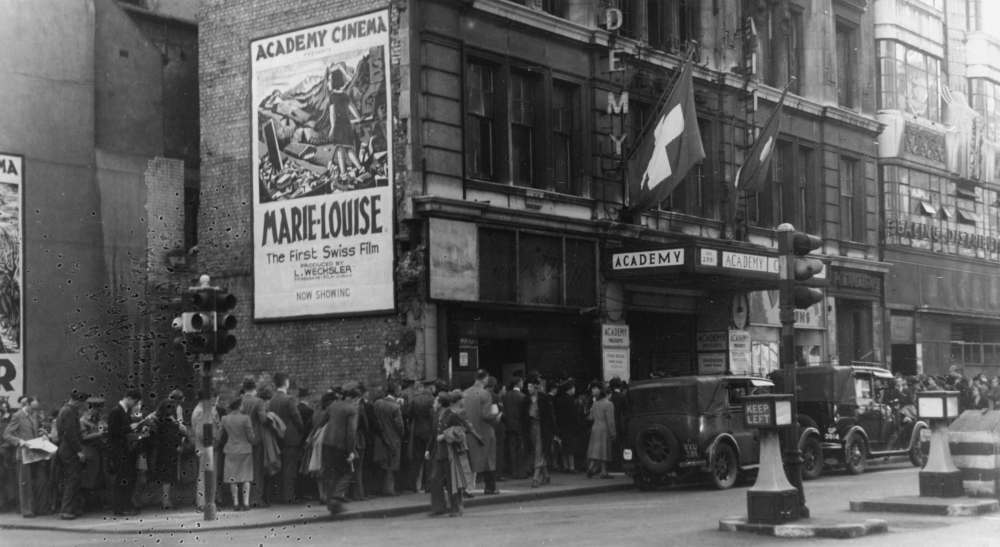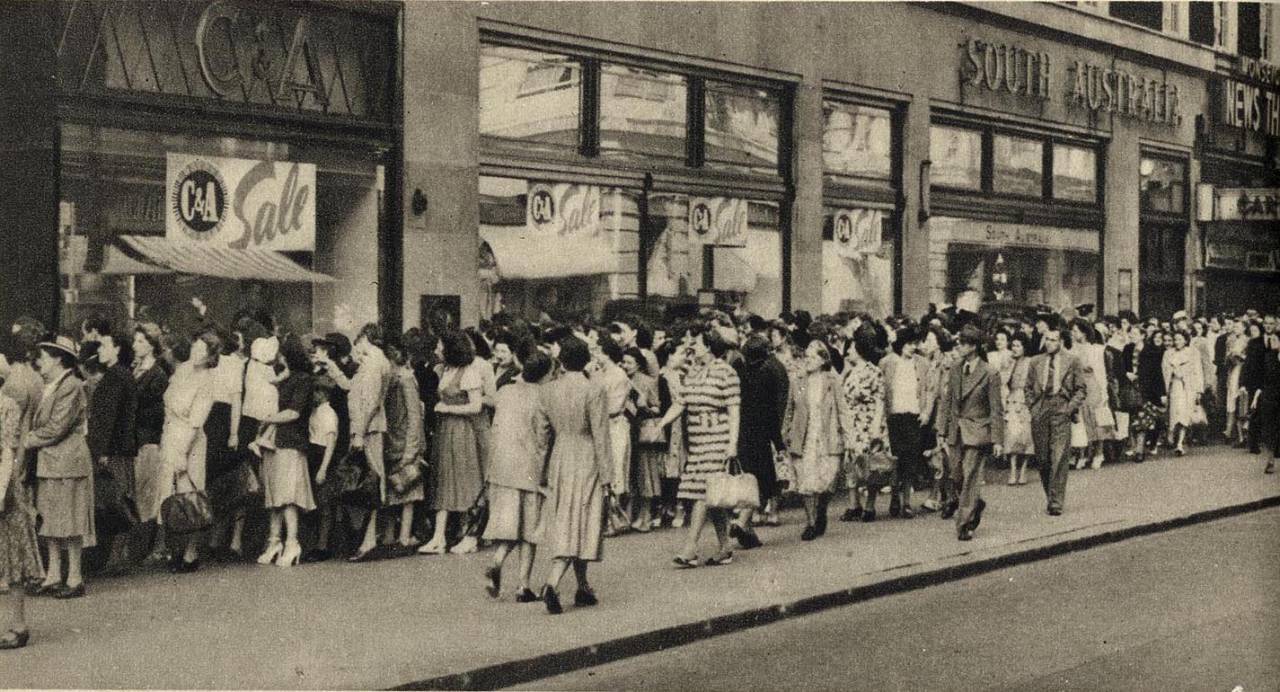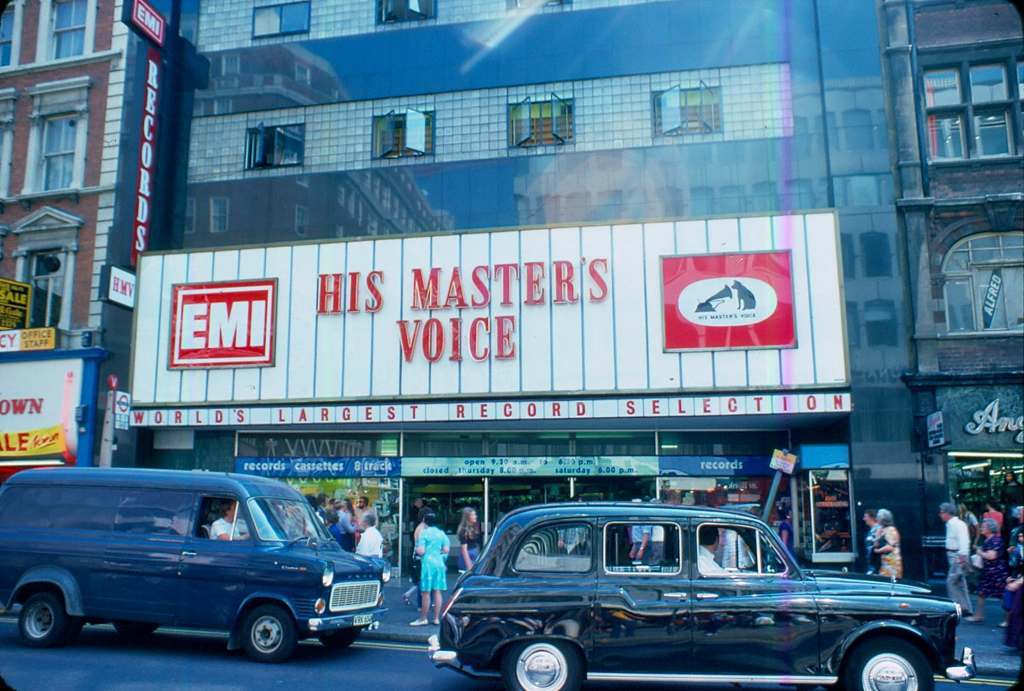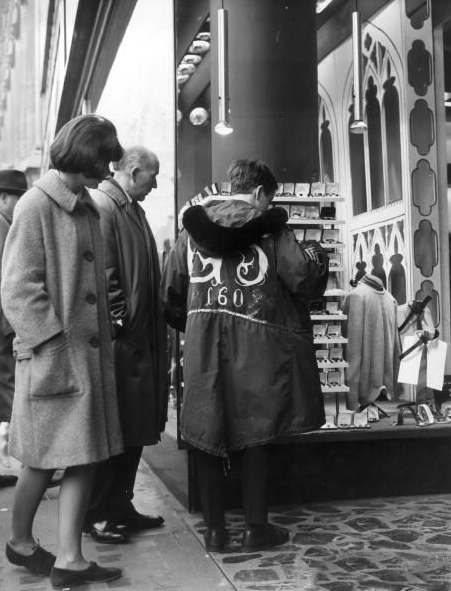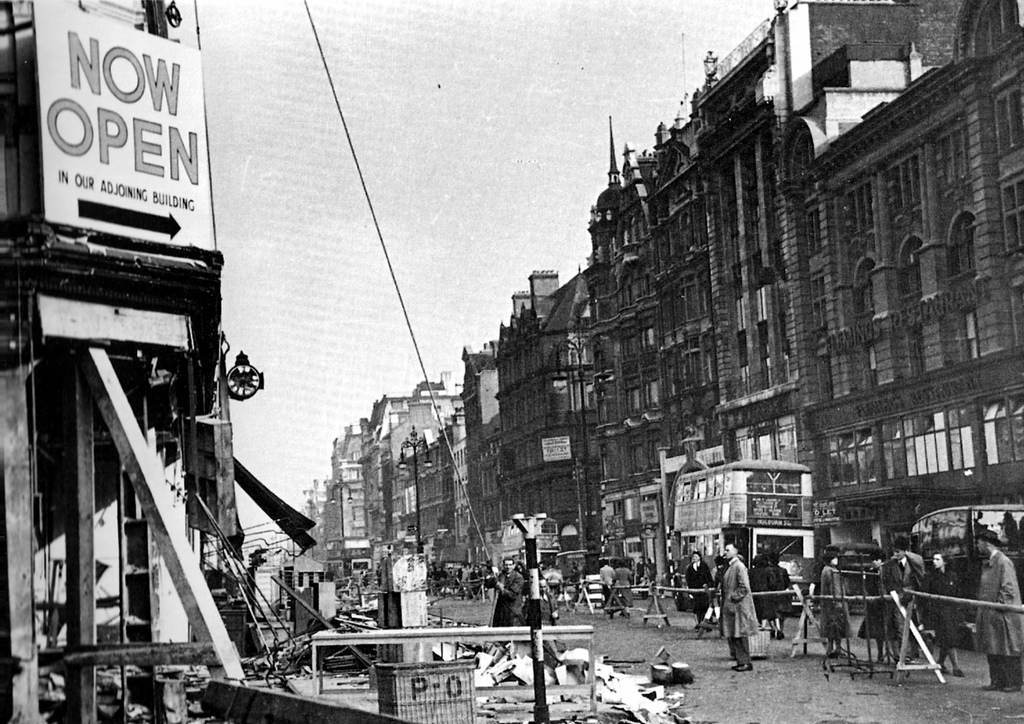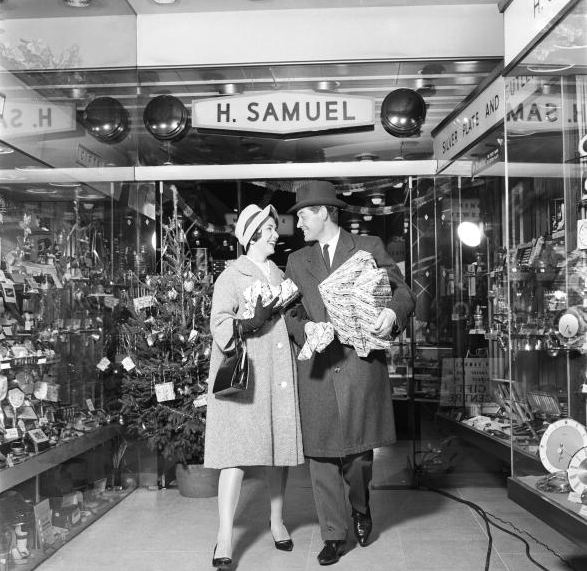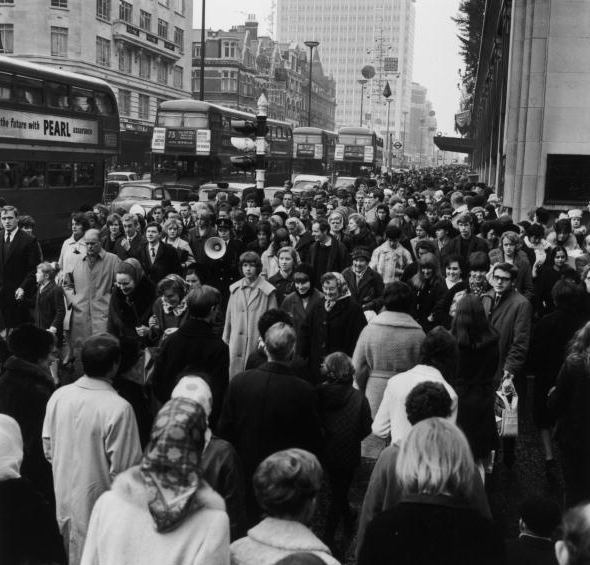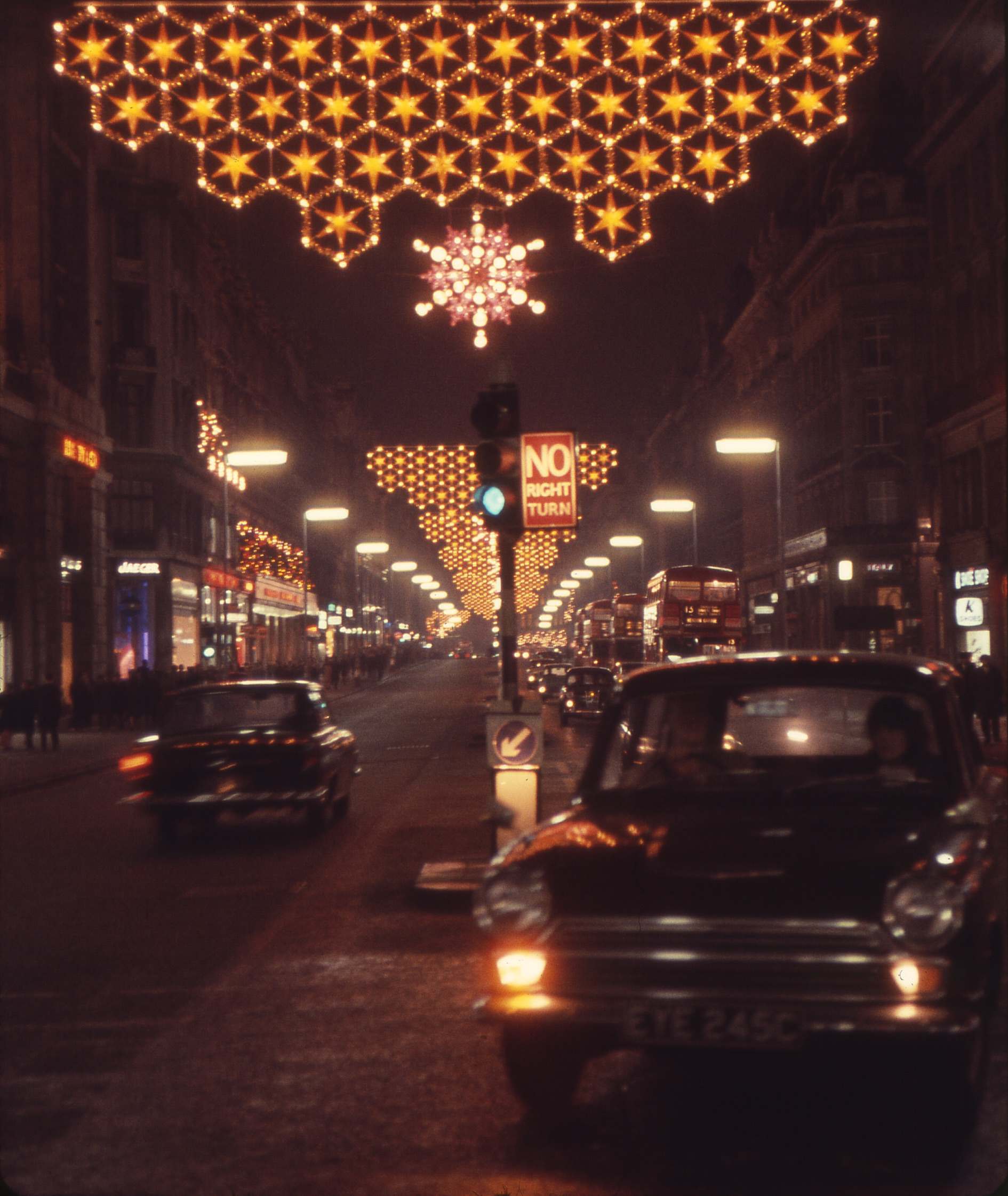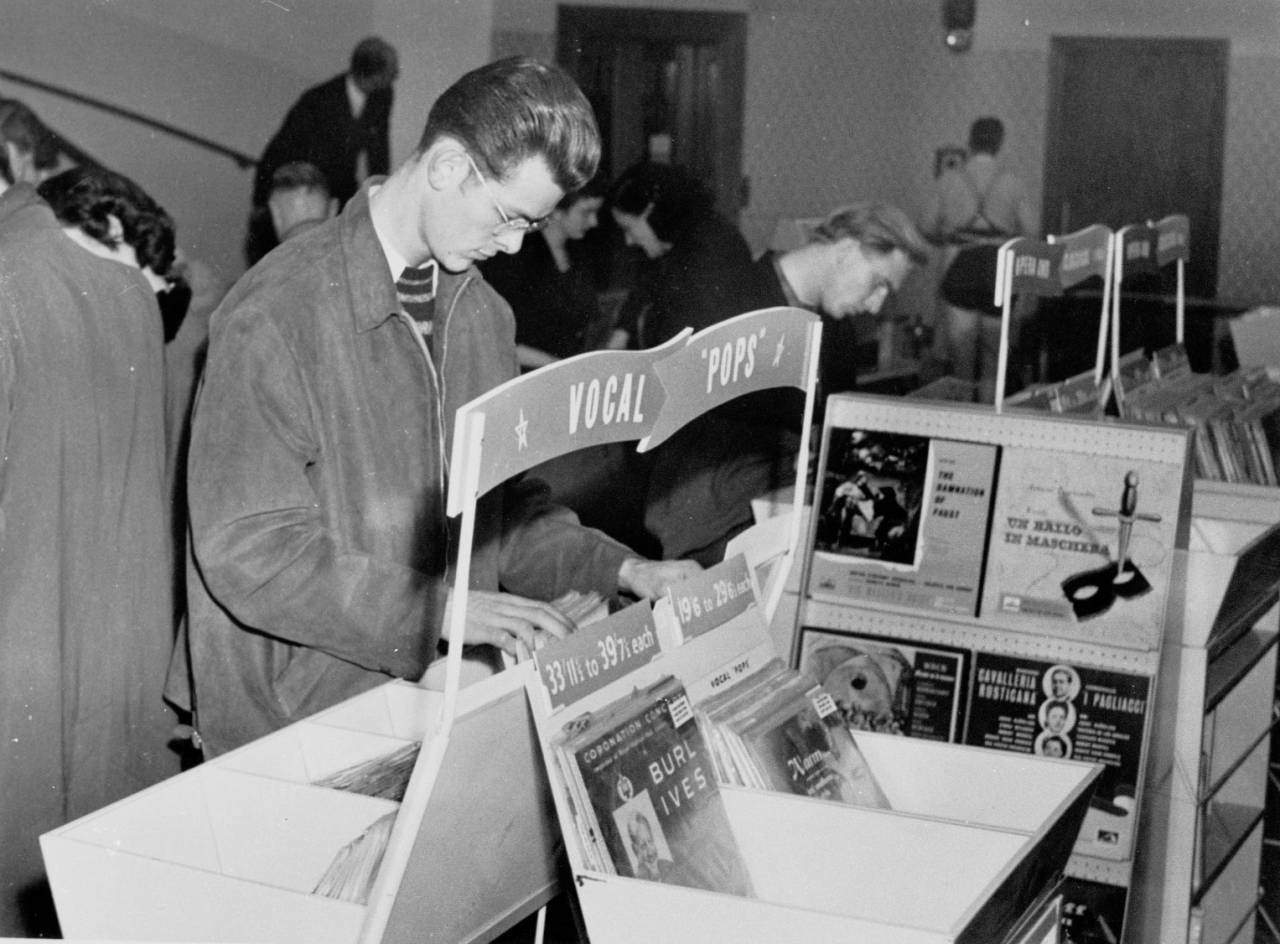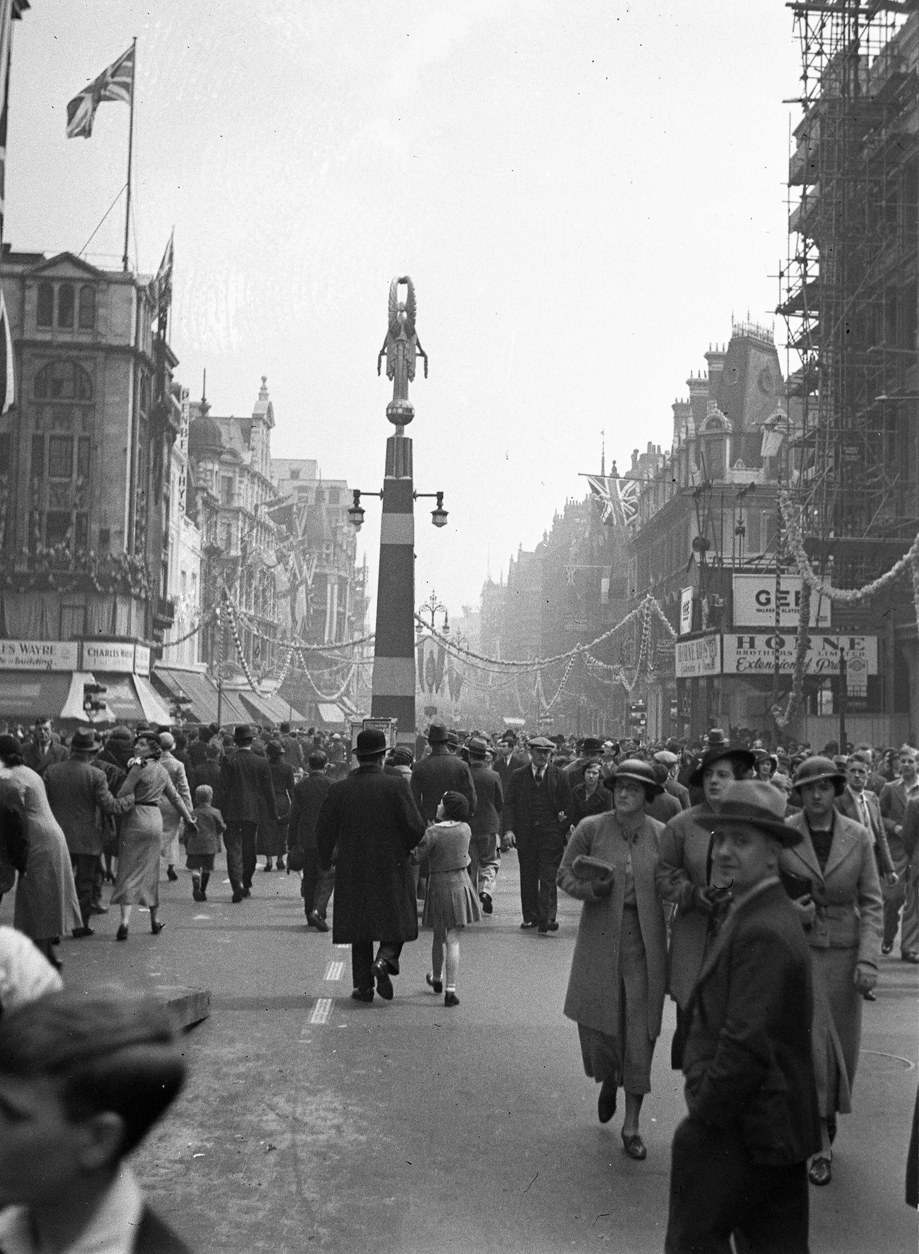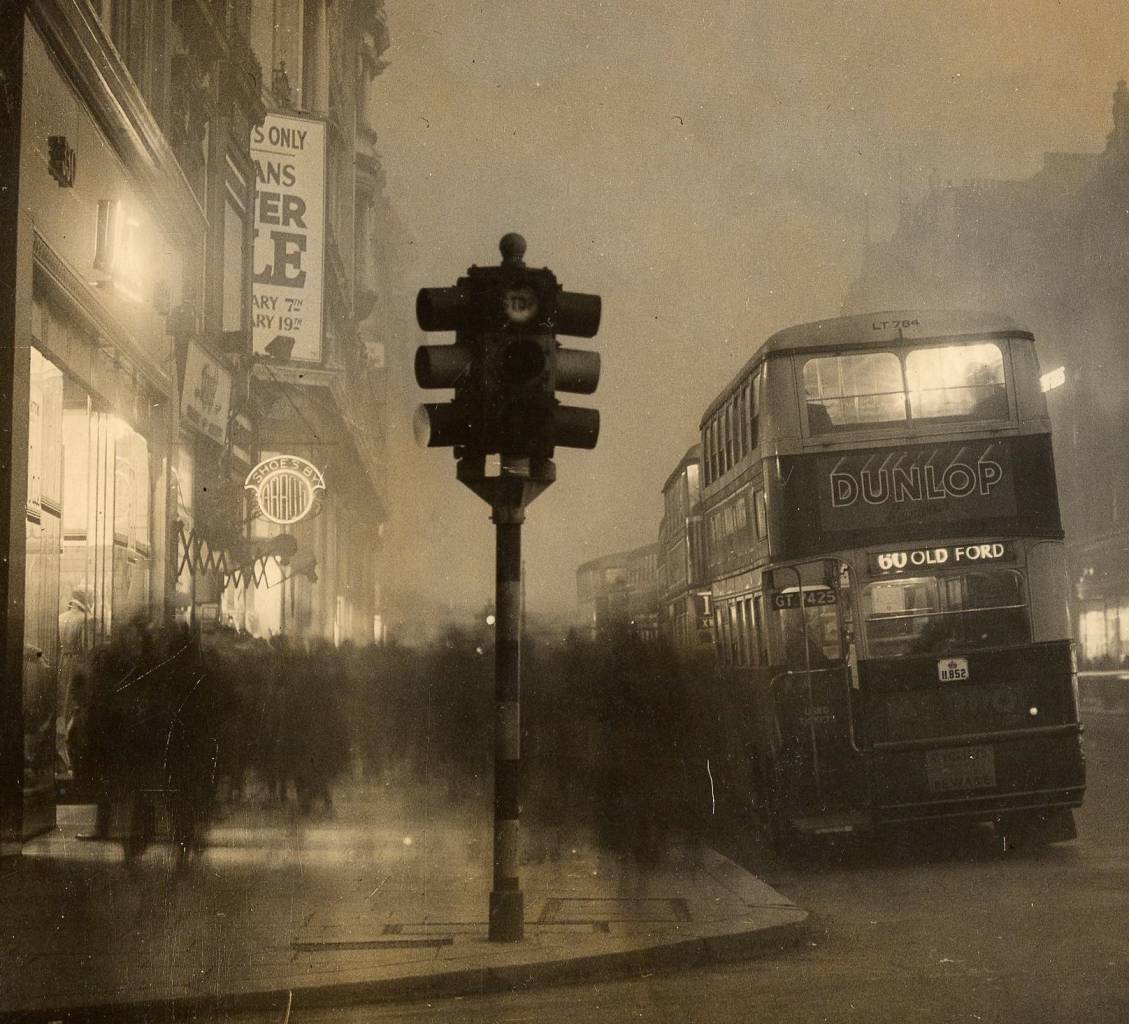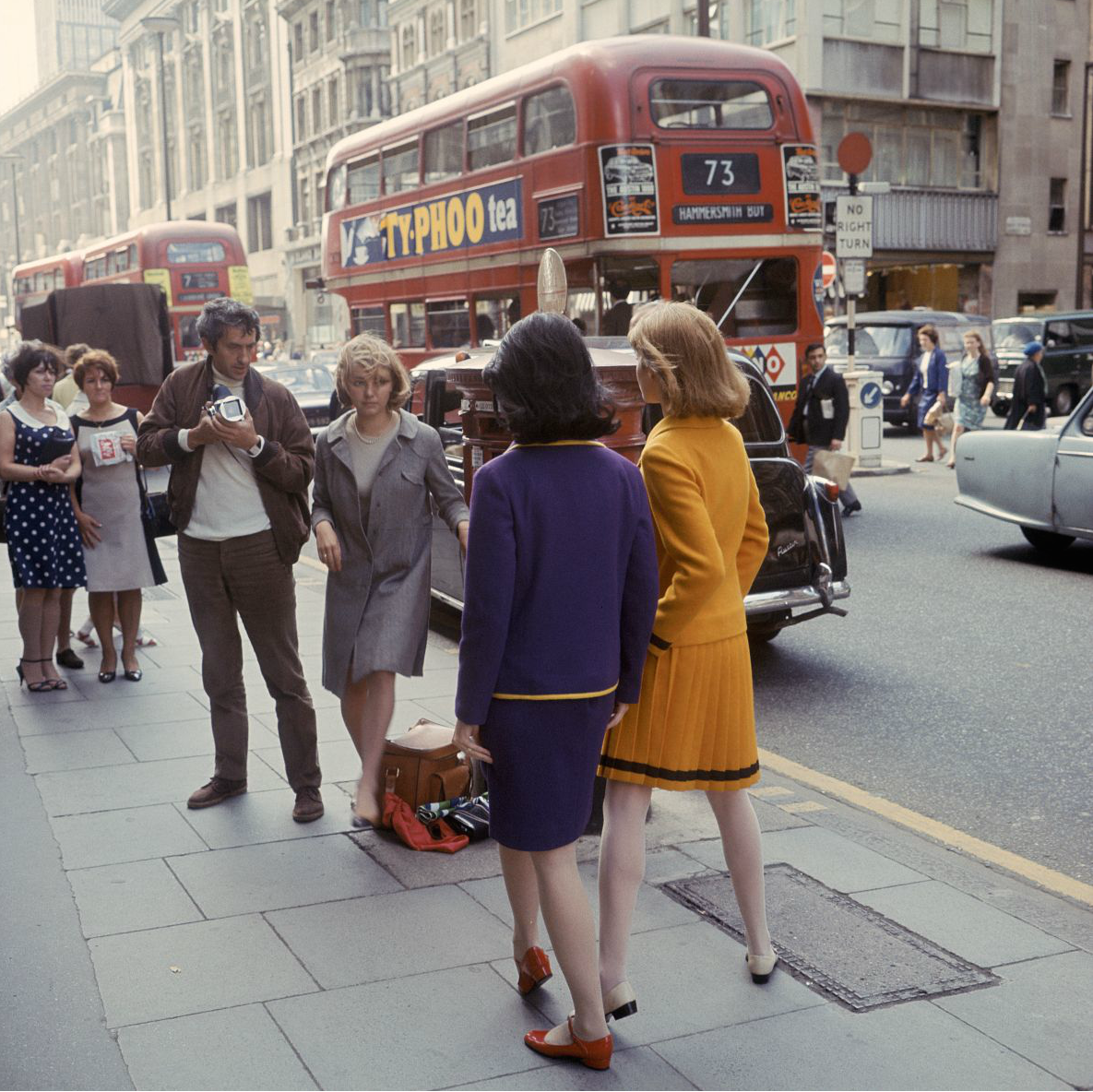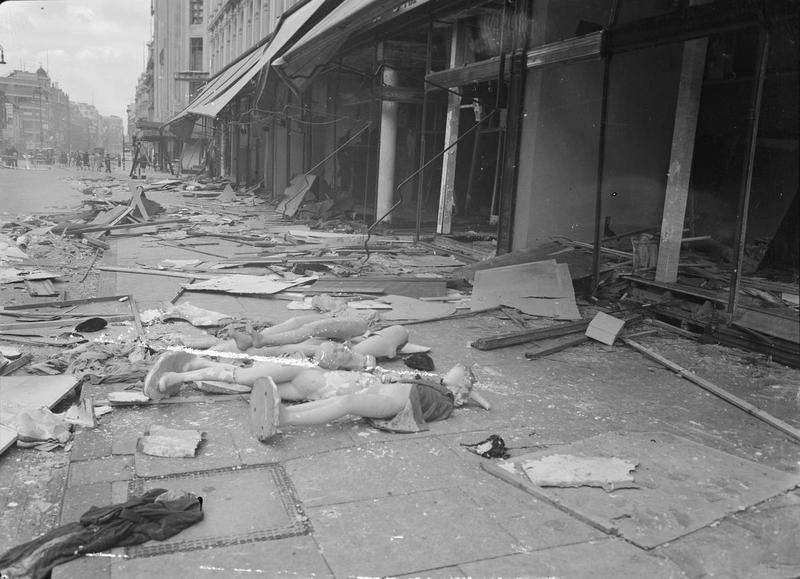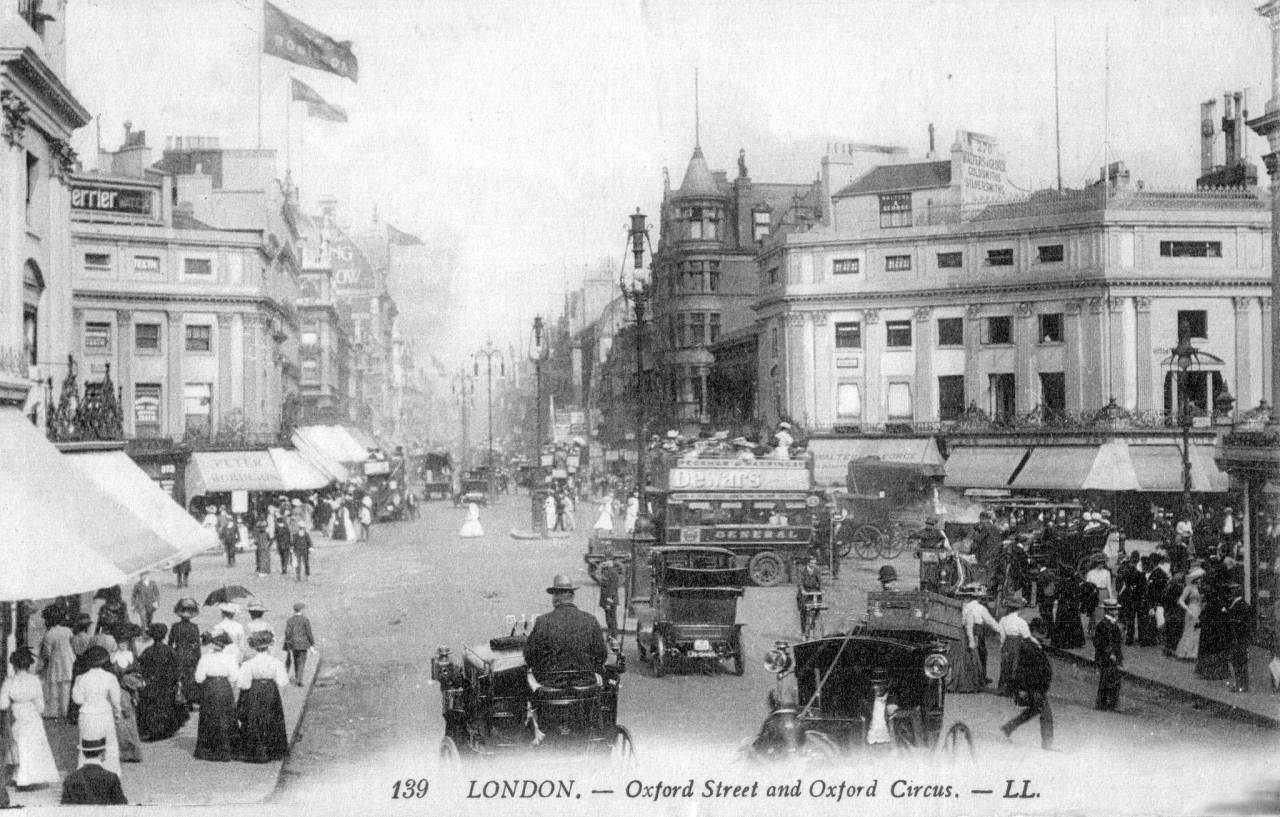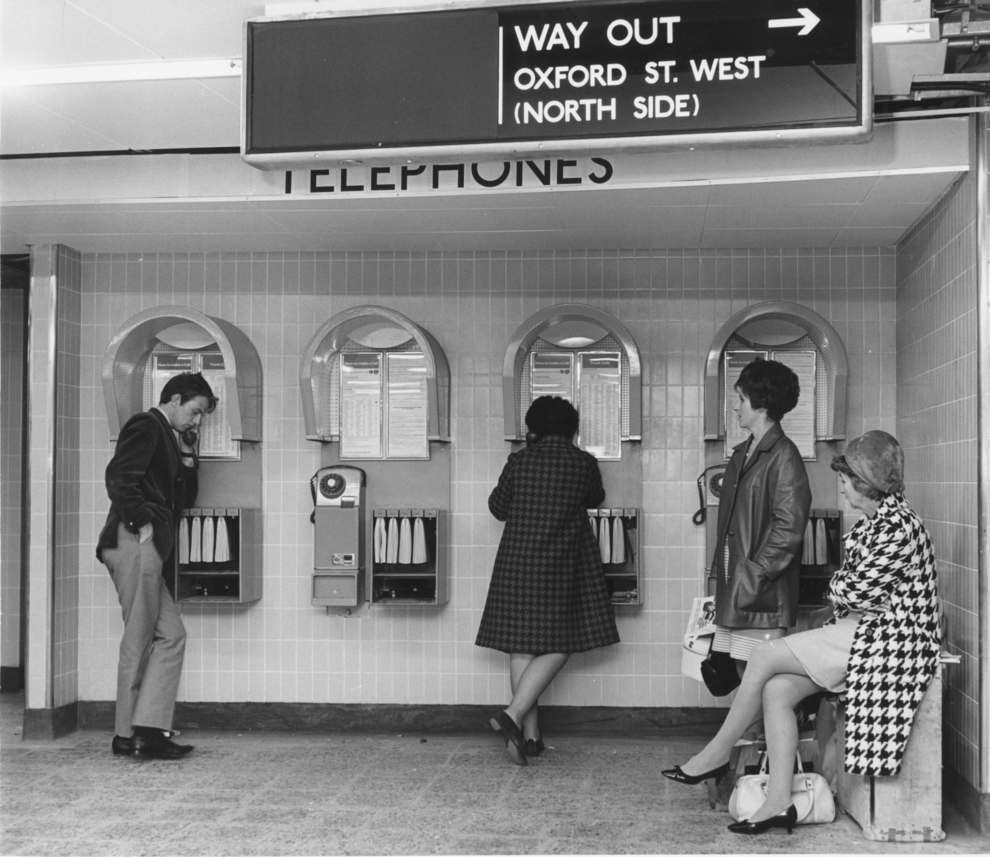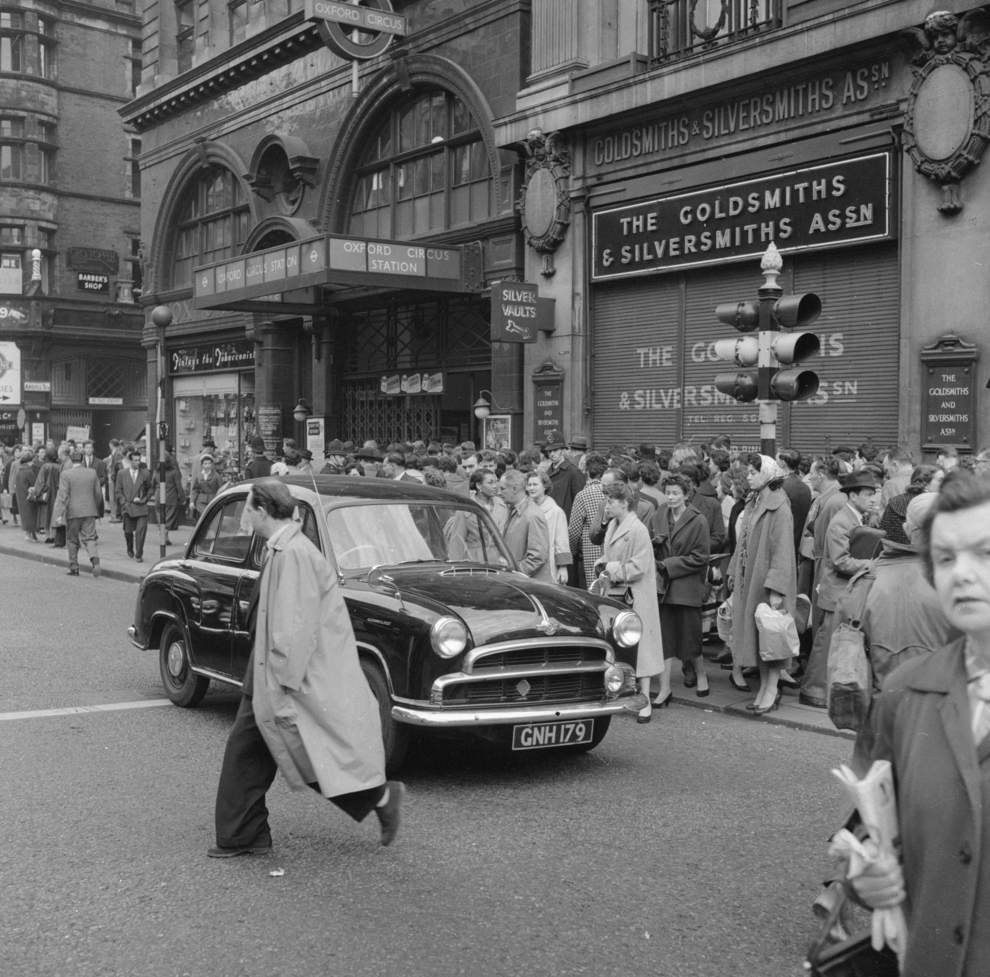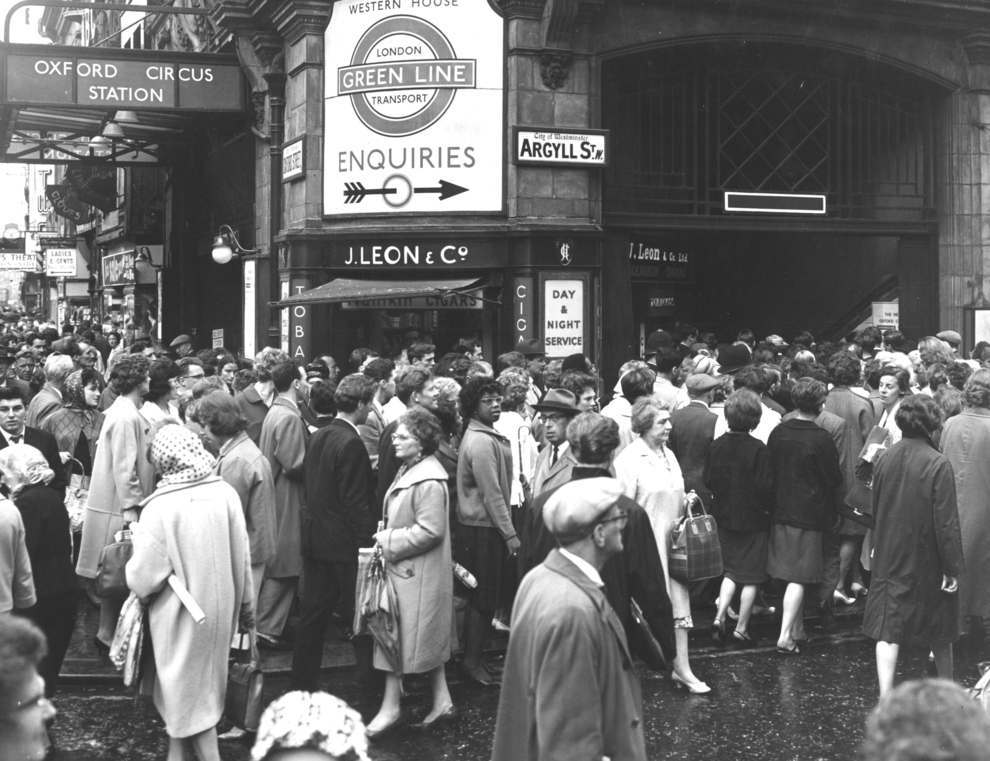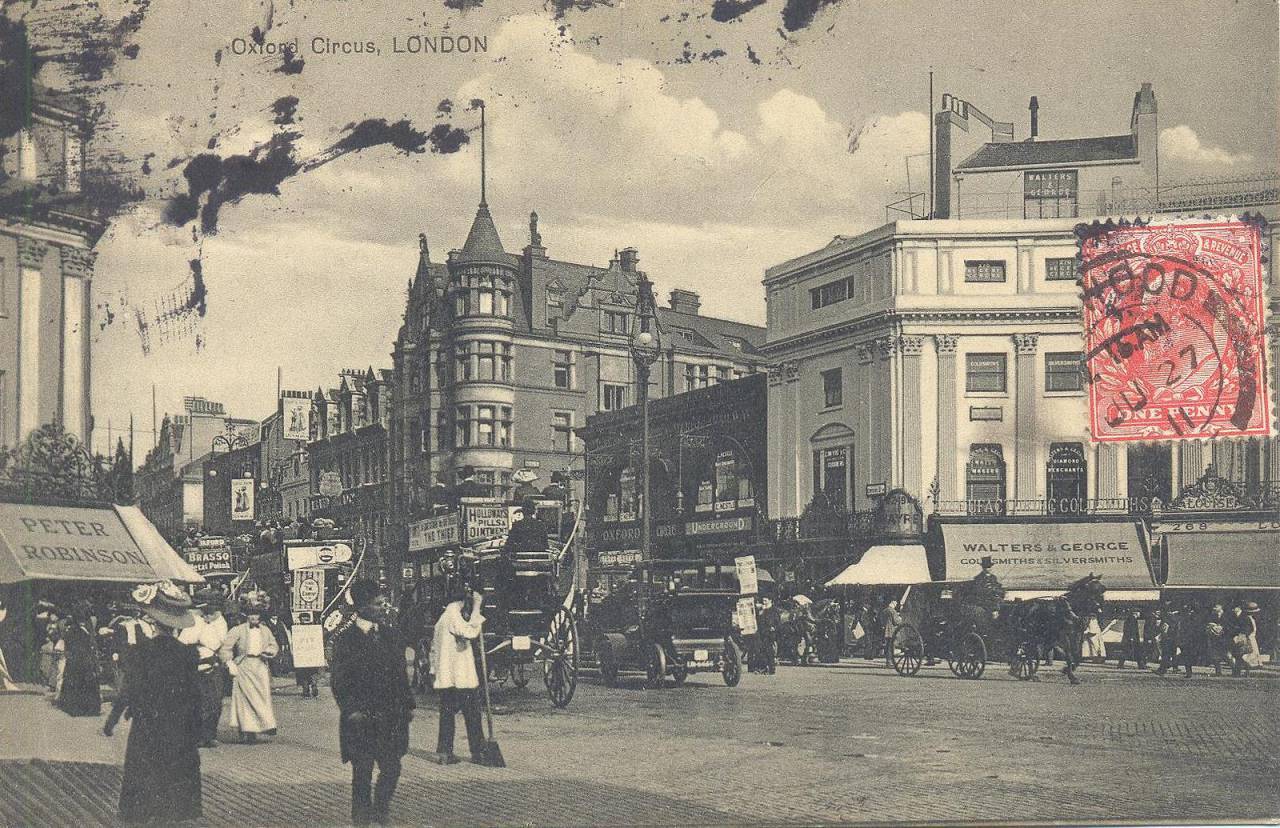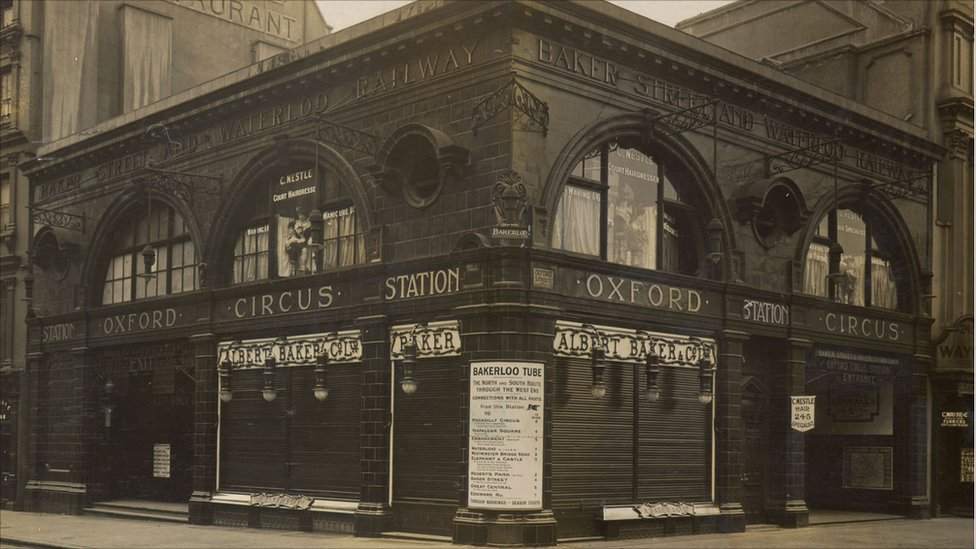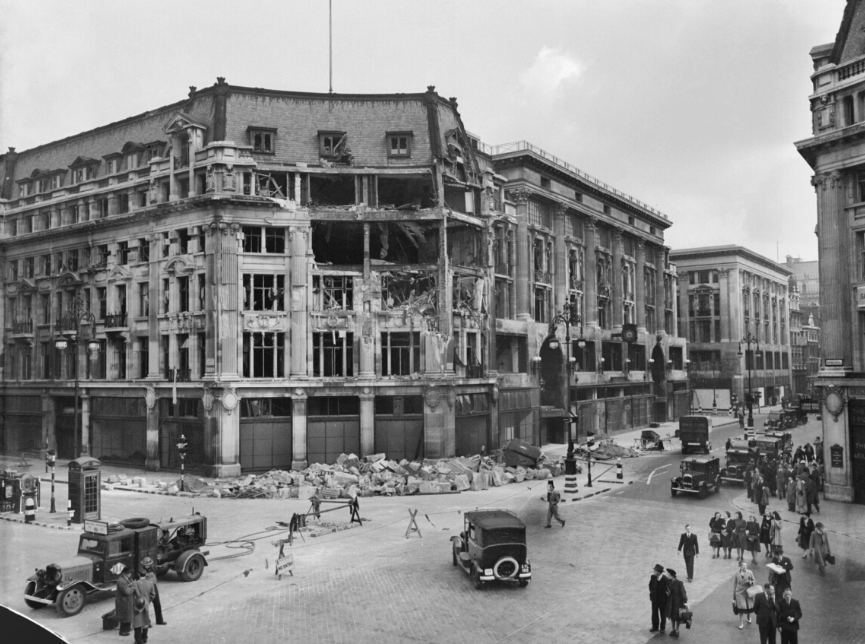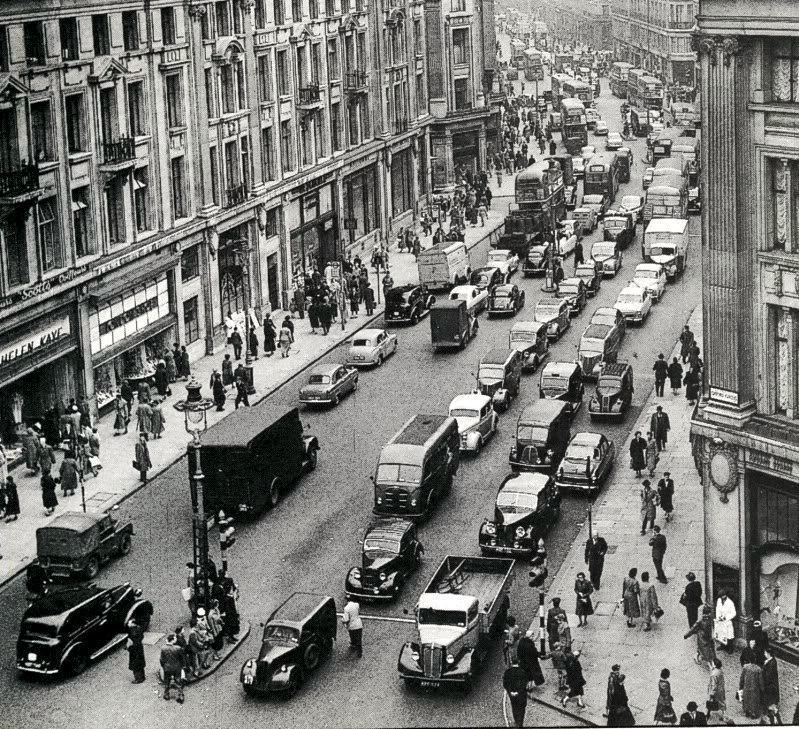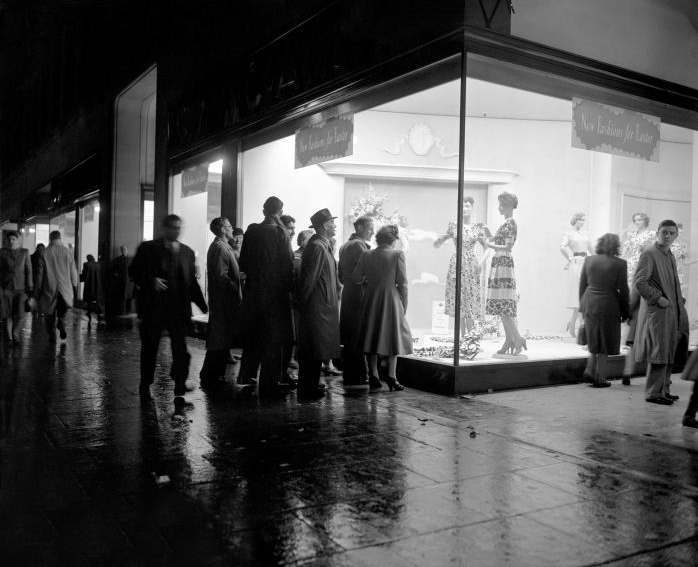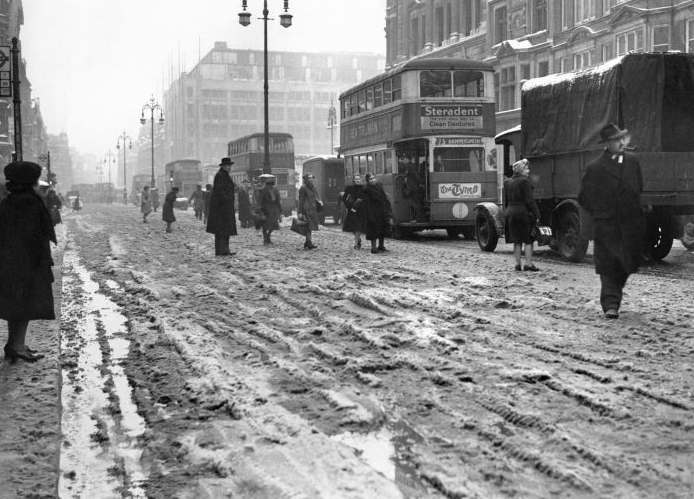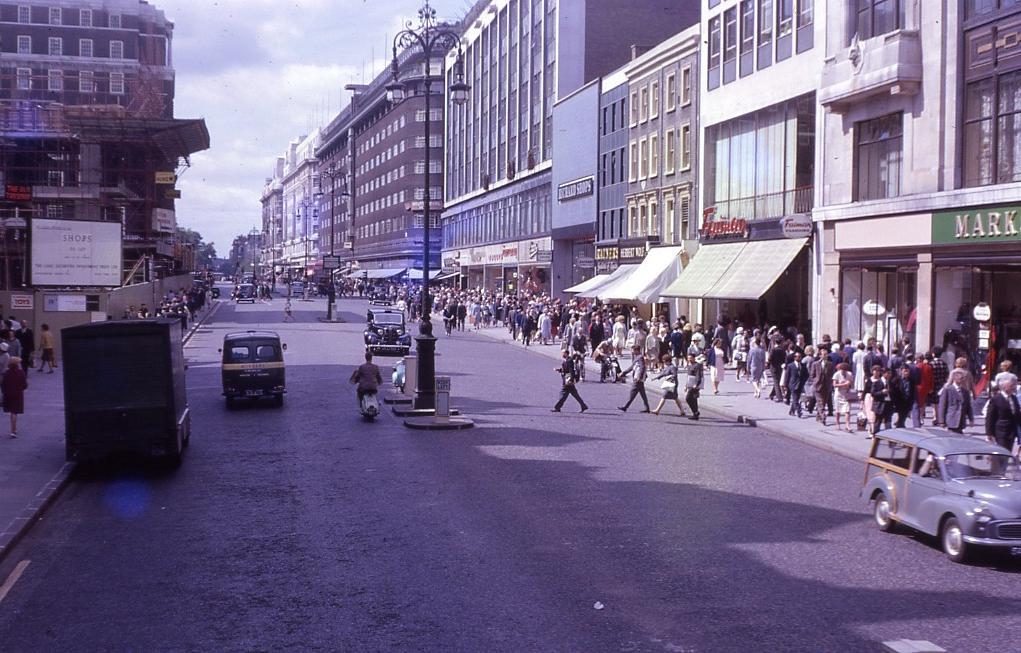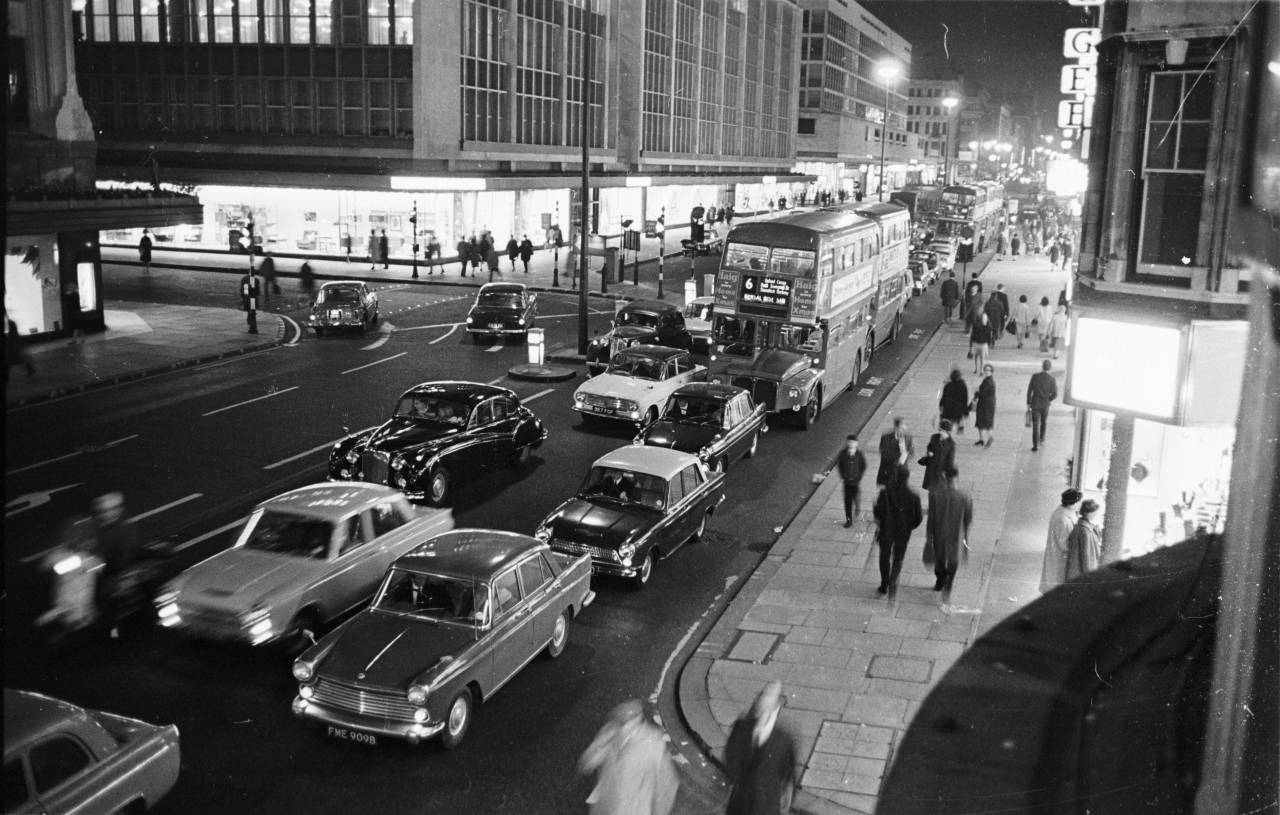
30th October 1965: Traffic in Oxford Street, the main shopping centre of London. (Photo by Powell/Express/Getty Images)
Oxford Street, long before it became part of the A40, was once part of a Roman Road called Via Trinobantina which linked Silchster and Colchester via London. Between the 12th Century and into the 18th Century it was known variously as the Tyburn Road (named after the Tyburn river which ran just south of it and now flows underneath Oxford Street), Uxbridge Road, Worcester Road and Oxford Road. By 1730 the road became known as Oxford Street.
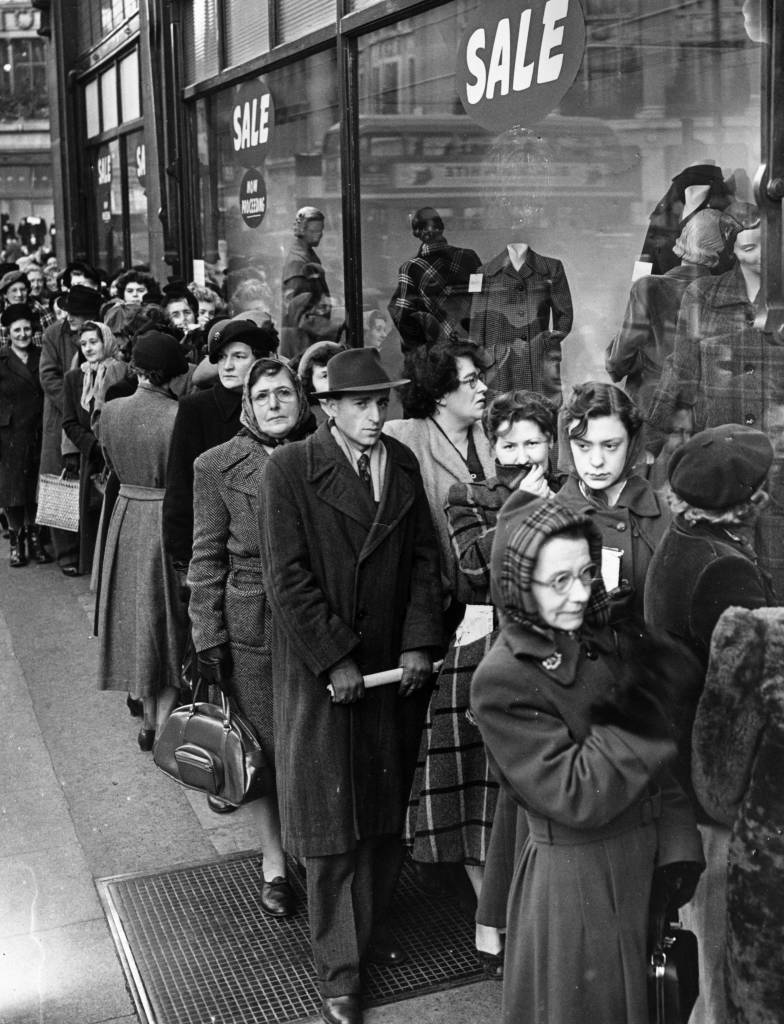
28th December 1951: Shoppers queuing outside Peter Robinsons in Oxford Street, London, for the start of the sales. (Photo by Monty Fresco/Topical Press Agency/Getty Images)
The street became popular with entertainers including bear-baiters, theatres and public houses. It was place shunned by the middle and upper classes due to the nearby Tyburn gallows and St Giles (the area around the junction of Oxford Street, Charing Cross Road and Tottenham Court Road), then a notorious ‘rookery’ or slum. The gallows were removed in 1783, and by the end of the century, Oxford Street was being built up from St Giles Circus in the east to Park Lane on the west, containing a mix of residential houses shops and theatres.
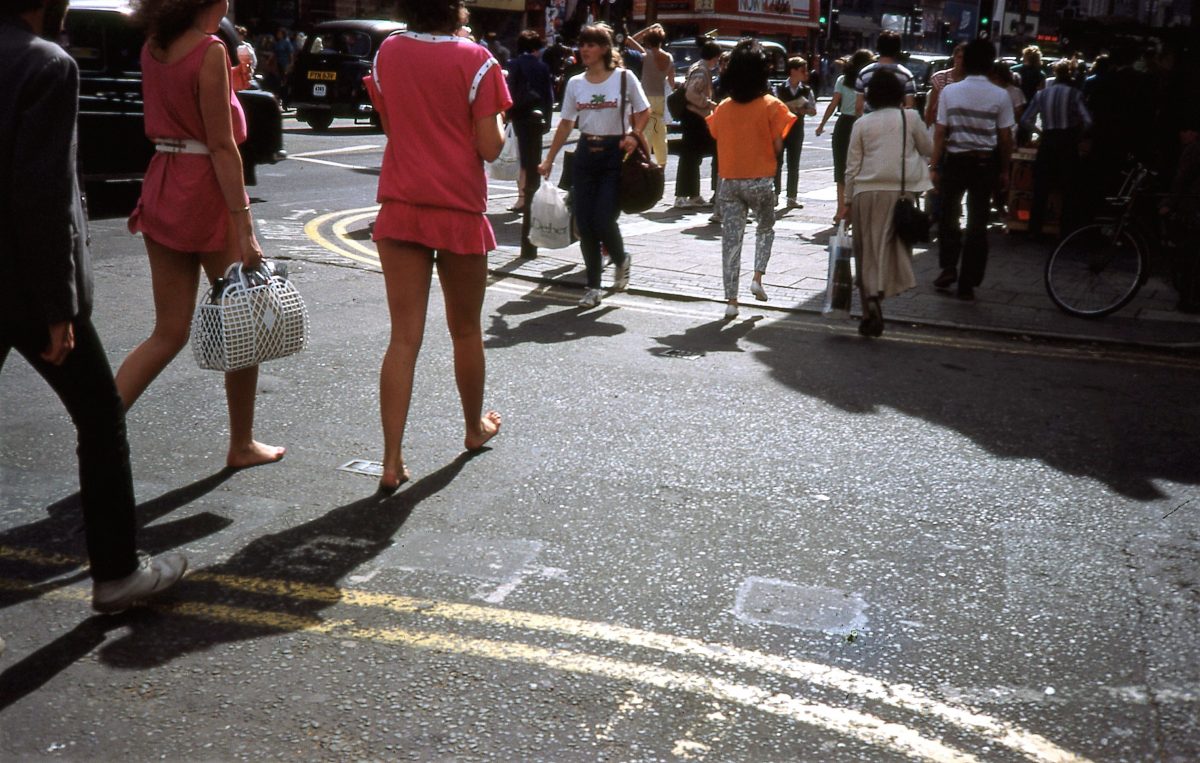
1984
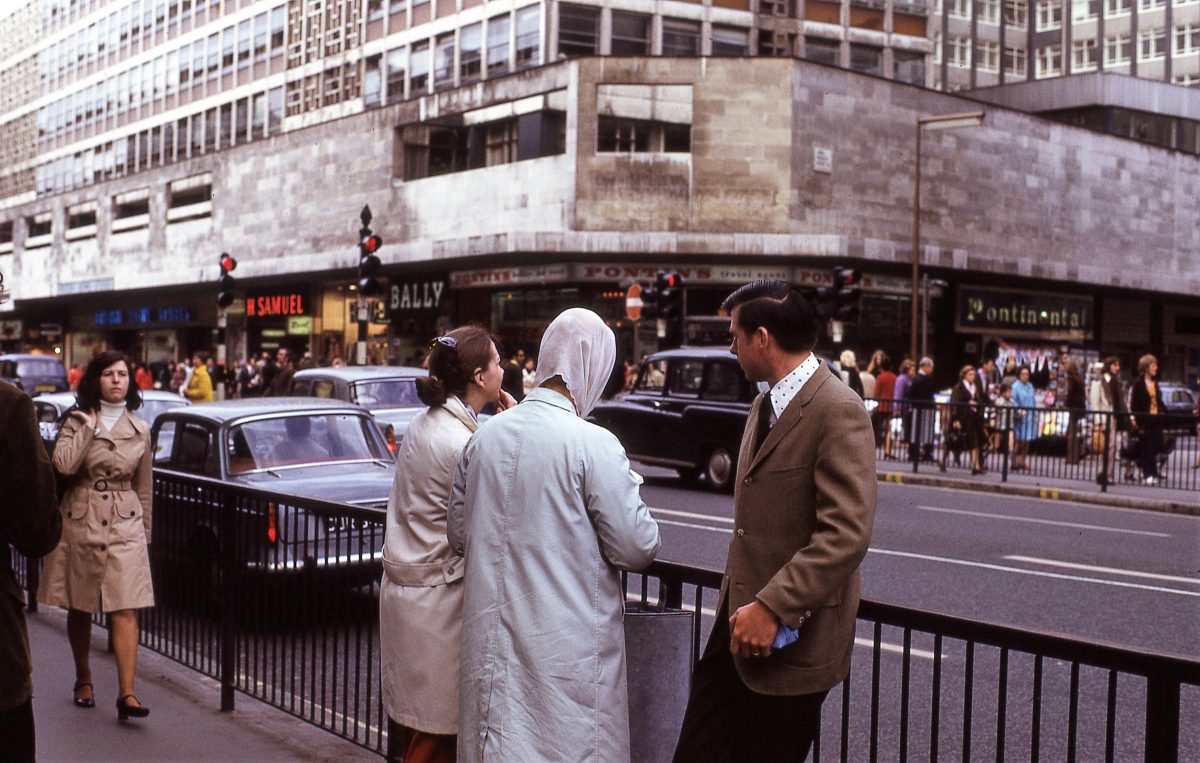
1972, courtesy of Glen F.
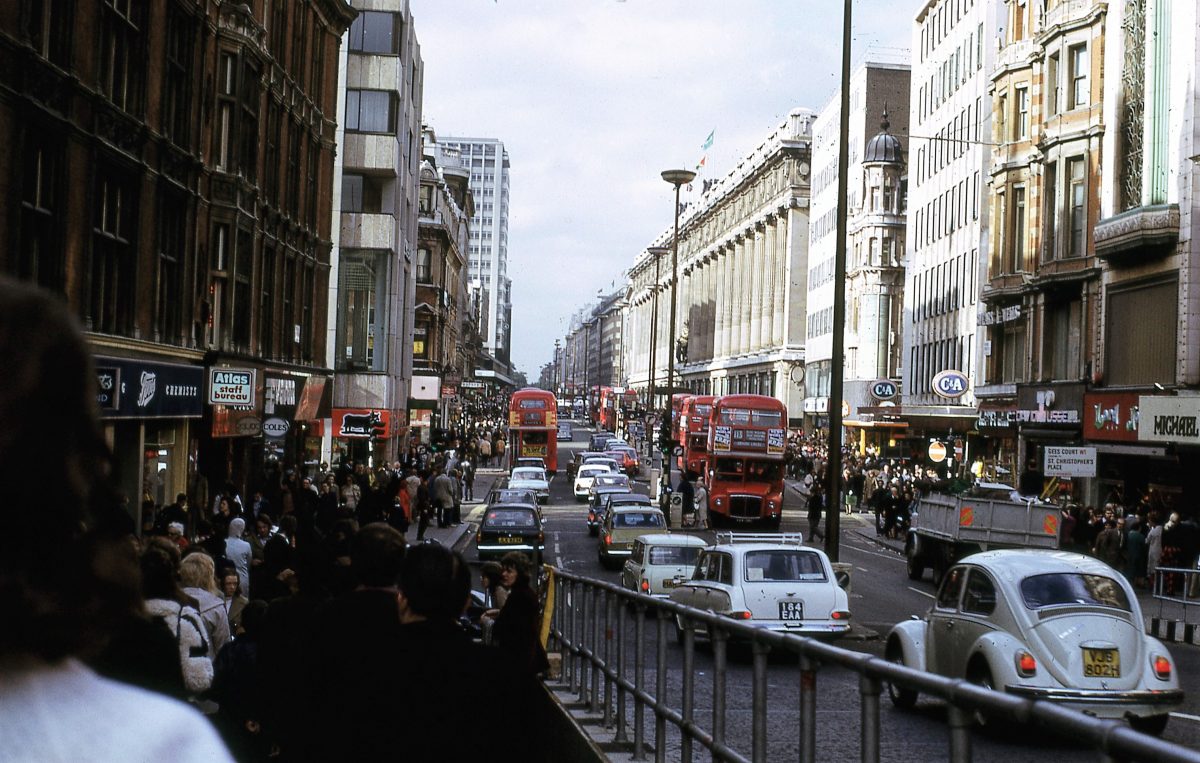
1972, courtesy of Glen F.
John Lewis started in 1864 as a small shop at No. 132, while Selfridges opened on 15 March 1909 at No. 400. By the 1930s, the street was almost entirely retail, a position that remains today. However, unlike nearby streets such as Bond Street and Park Lane, there has remained to this day a slightly seedy element that can never quite be shook off.
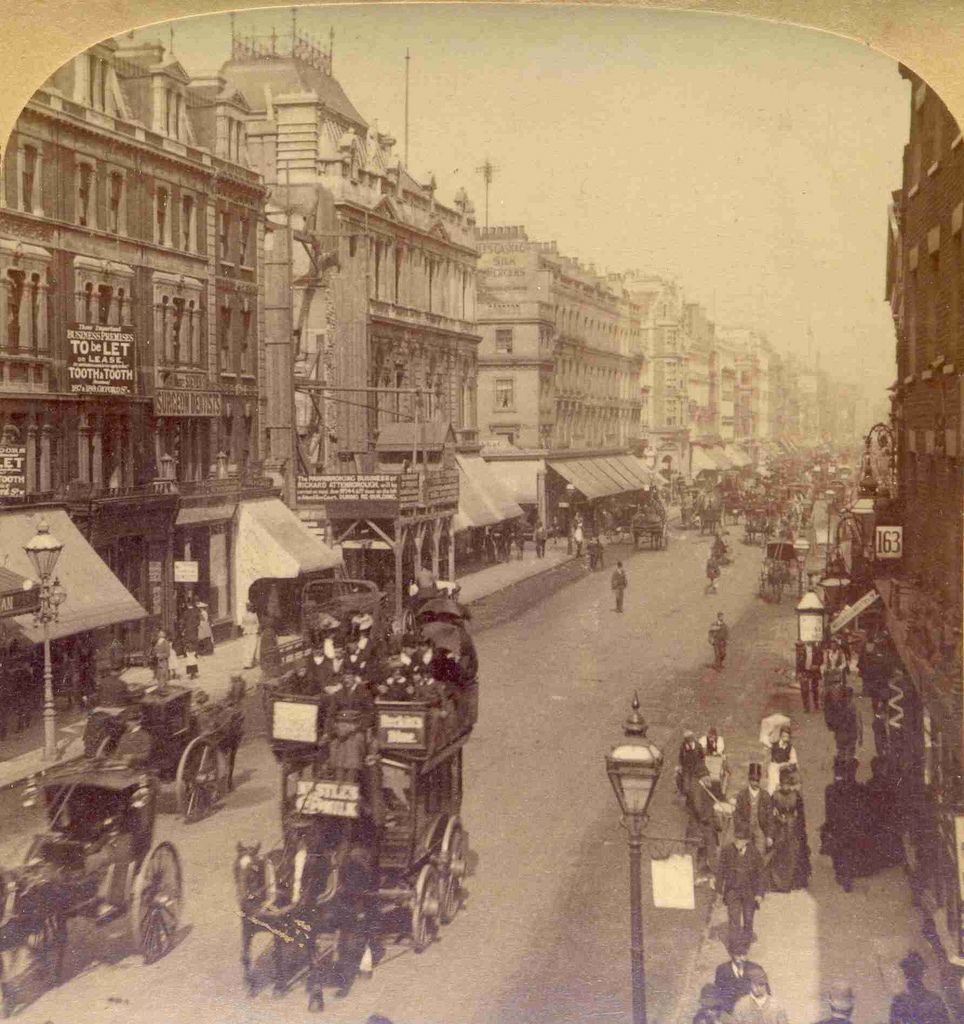
Oxford Street, London, 1887. A stereoview image published by J.F. Jarvis and sold by Underwood & Underwood.
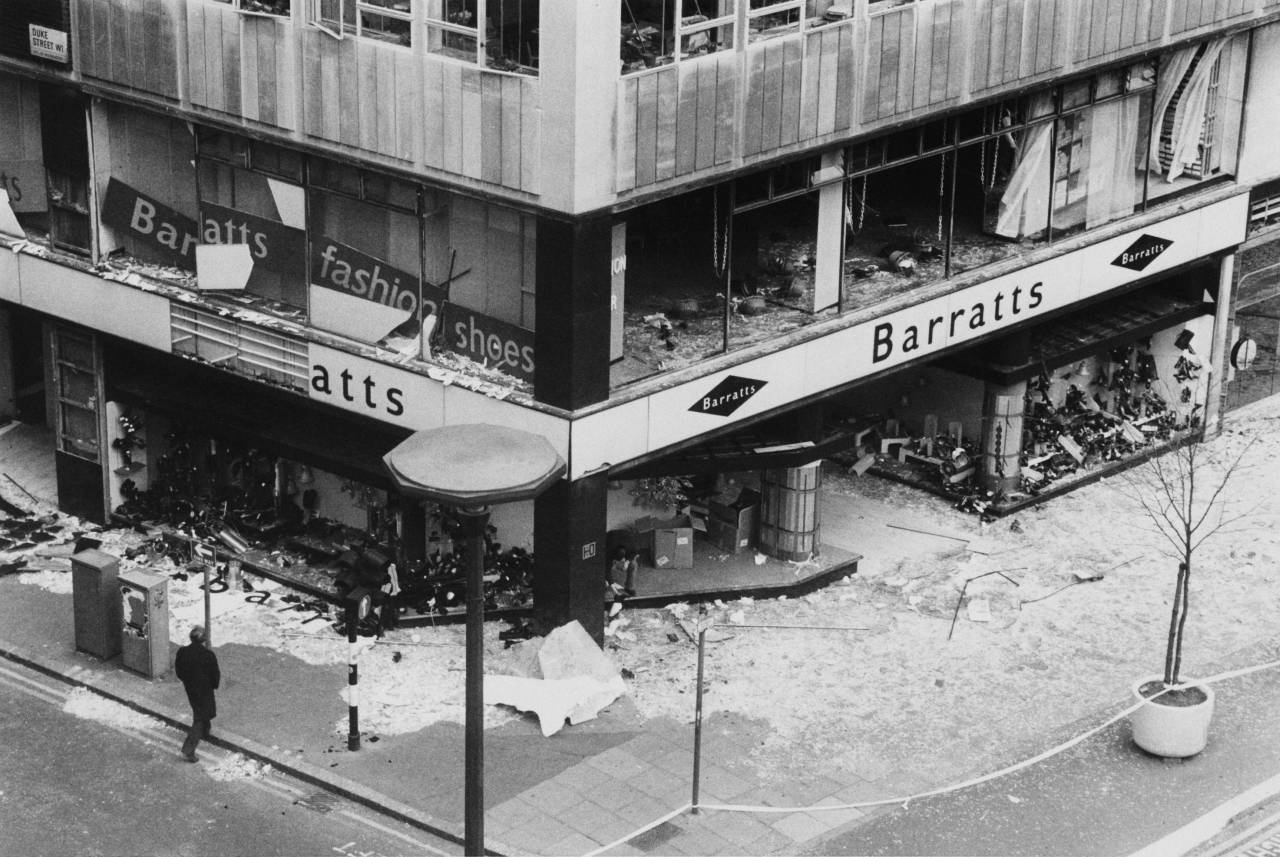
The scene on the day following an IRA (Provisional Irish Republican Army) car bomb explosion in Oxford Street, London, 20th December 1974. Three people were injured in the blast. (Photo by Central Press/Hulton Archive/Getty Images)
Oxford Street suffered not inconsiderable damage during the Second World War. During the night and early hours of 17 to 18 September 1940, 268 Heinkel He 111 and Dornier Do 17 bombers targeted the West End, particularly Oxford Street. Many buildings were damaged, either from a direct hit or subsequent fires, including four department stores: John Lewis, Selfridges, Bourne & Hollingsworth and Peter Robinson.
George Orwell wrote in his diary for 24 September that Oxford Street was “completely empty of traffic, and only a few pedestrians”, and saw “innumerable fragments of broken glass”. John Lewis caught fire again on 25 September and was reduced to a nothing but a shell. It remained a bomb site for the remainder of the war and beyond, finally being demolished and rebuilt between 1958 and 1960. Peter Robinson partially reopened on 22 September.
Selfridges was bombed again on 17 April 1941, suffering further damage, including the destruction of the Palm Court Restaurant. The store was damaged yet again on 6 December 1944 after a V2 rocket exploded on nearby Duke Street.
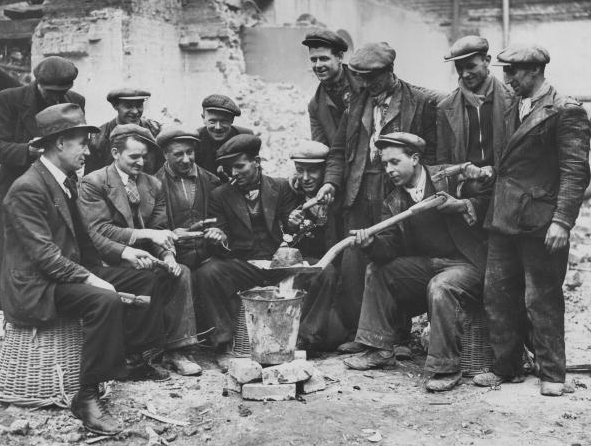
20th December 1937: Workmen demolishing the Pantheon in Oxford Street, London, warm up a Christmas pudding. By Reg Speller.
My first paid job was delivering newspapers. The first paid acting job I got was dressing up as Edam cheese and handing out leaflets on London’s Oxford Street. I got pushed over by these little herberts and given a good shoe-in.
Jason Flemyng
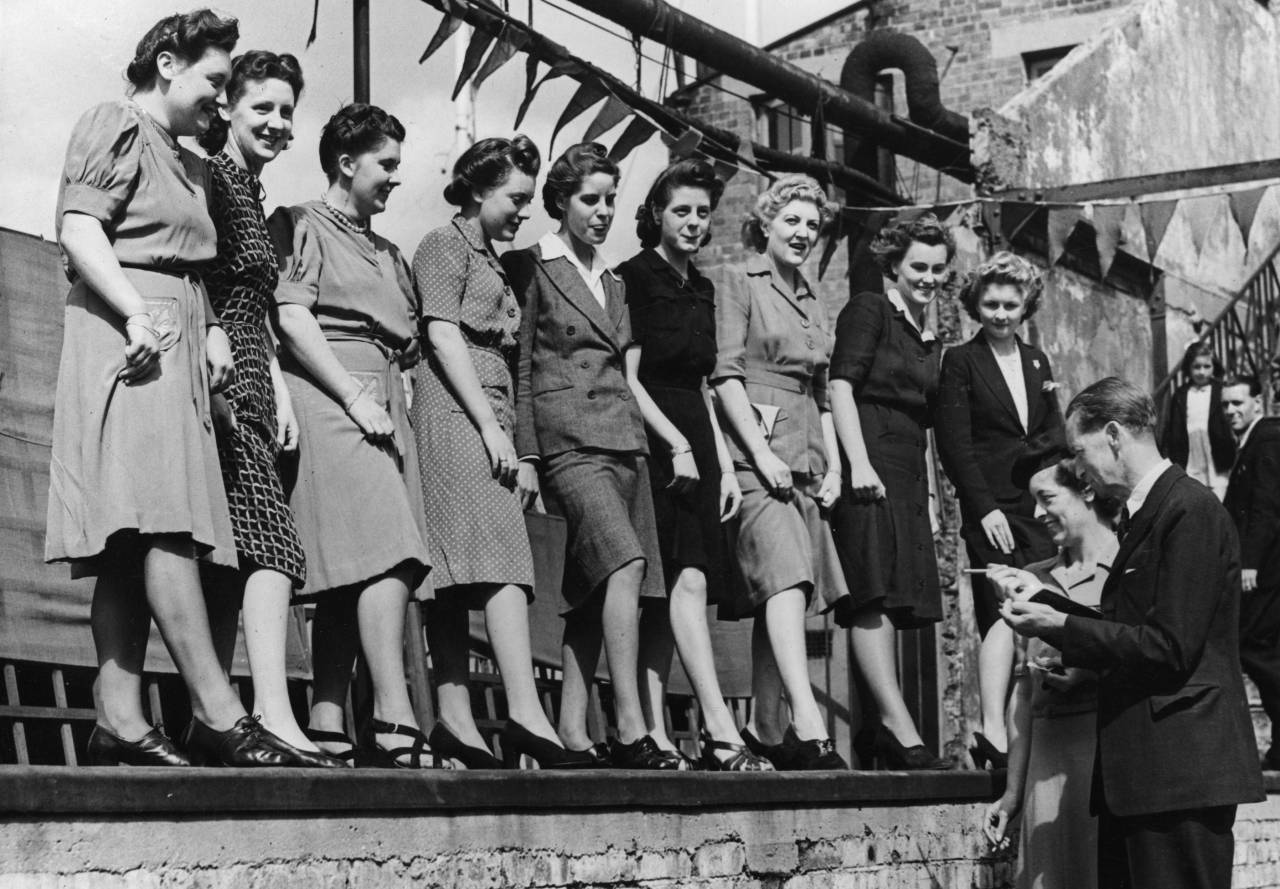
17th August 1943: The ankle judging competition at Selfridges department store’s annual sports meeting on the roof of the shop’s building in London’s Oxford Street. (Photo by Fred Morley/Fox Photos/Getty Images)
“I walk to Oxford Street and climb on the number 8. It’s freezing and it starts to rain and it’s the ugliest bus I’ve ever seen, rattling down the ugliest streets, in the ugliest city, in the ugliest country, in the ugliest of all possible worlds.”
― David Thewlis, The Late Hector Kipling
“Whenever I tell people I’m a misanthrope they react as though that’s a bad thing, the idiots. I live in London, for God’s sake. Have you walked down Oxford Street recently? Misanthropy’s the only thing that gets you through it.” – Charlie Brooker
“We are far from liking London well enough till we like its defects: the dense darkness of much of its winter, the soot on the chimney-pots and everywhere else, the early lamplight, the brown blur of the houses, the splashing of hansoms in Oxford Street or the Strand on December afternoons.There is still something that recalls to me the enchantment of children—the anticipation of Christmas, the delight of a holiday walk—in the way the shop-fronts shine into the fog. It makes each of them seem a little world of light and warmth, and I can still waste time in looking at them with dirty Bloomsbury on one side and dirtier Soho on the other.”
Author: Henry James
So, then, Oxford Street, stonyhearted stepmother, thou that listenest to the sighs of orphans, and drinkest the tears of children, at length I was dismissed from thee.
Thomas de Quincey
Would you like to support Flashbak?
Please consider making a donation to our site. We don't want to rely on ads to bring you the best of visual culture. You can also support us by signing up to our Mailing List. And you can also follow us on Facebook, Instagram and Twitter. For great art and culture delivered to your door, visit our shop.
